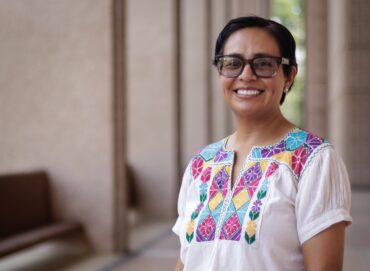
Media Contact: Javier Rojas, javier.rojas@csun.edu, (818) 677-2130
Despite efforts at the federal level to curb California’s clean-air vehicle initiatives, including the phase out of gas-powered vehicles, optimism remains on the future of electric vehicles in the state.
Yan Searcy, dean of California State University, Northridge’s College of Social and Behavioral Sciences, home of both CSUN’s Institute for Sustainability and its master’s degree in Sustainability Program, said the positive outlook comes despite federal government challenges related to environmental policies, including Pres. Donald Trump’s signing of congressional bill overturning California’s 2035 gasoline-powered car ban.
While Searcy said the state’s 2035 gasoline-powered car ban was always “an ambitious goal,” he remains optimistic as the infrastructure that has been built over the past decade in support of EVs and consumer buy-in that has followed.
“The state has always been the site of innovation when it comes to transportation and that’s going to continue in spite of what is going on in Washington,” Searcy said. “The EV industry is thriving, and I expect more people to buy-in when it comes to zero-emission vehicles in California.”
The positive outlook comes as federal tax credits for zero-emission vehicles — up to $7,500 for car buyers — is set to expire on Sept. 30 after Trump signed his legislative bill in July.
As electric vehicles generally cost more than their gas-powered counterparts, government incentives were crucial in encouraging people to buy cleaner cars. However, Searcy said, many Californians have already bought electric vehicles and access to buying them has only increased.
“The tax credits did what they needed to do, which was a financial priming of the pump in order to impact consumer behavior in order to get people to adopt EVs,” Searcy said. “We had to make it financially attractive for people to take a chance on what at the time was this new technology.
“It seems in California specifically, every third car appears to be a Tesla,” he continued. “You go to shopping malls and there used to be one or two spaces for EVs, now there’s entire sections for vehicle charging, and that can be attributed to having buy-in from people over a number of years.”
That momentum won’t stop anytime soon, Searcy said, despite controversy earlier this year when it came to Tesla CEO Elon Musk and his political activity. While public favorability when it comes to Musk is low, people shouldn’t lump the future of EVs and Musk together, he said.
“It was never about electric cars, people might have had second thoughts when it came to buying an Elon Musk product, but they don’t regret buying the electric car,” Searcy said.
There are also more options than a decade ago when it comes to electric vehicles, Searcy noted, pointing out that car brands like Lucid and Rivian have also broken into the EV car market. Rideshare companies like Waymo, which utilizes driverless EVs and have also sprung up in major cities like San Francisco and Los Angeles, are attracting younger audiences in the process.
All of this, Searcy said, makes him confident Californians will continue their support of EVs and their positive impact on the environment.
“We’re raising a generation that is keen on sustainability and we’re not going back,” Searcy said. “There has also been a change in less than one generation in other ways when it comes to being sustainable; everybody now has their own water bottle and that’s just water. At least we can say Southern California was able to do that in less than one generation and I think we will look at EVs the same way in the years to come.”




Comments are closed.